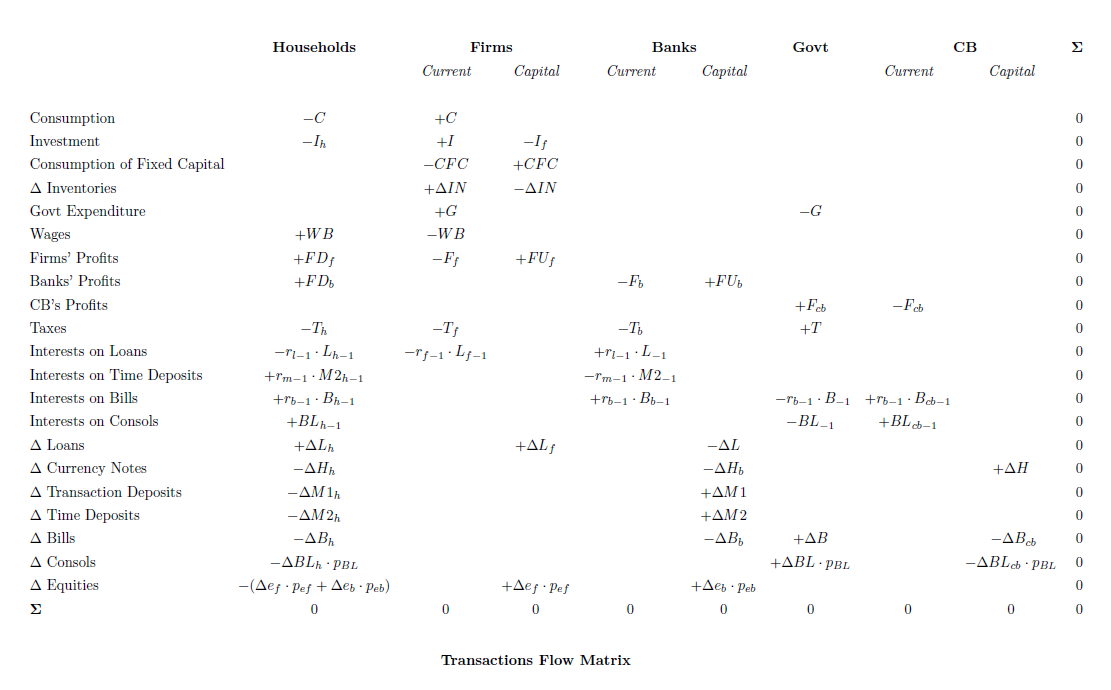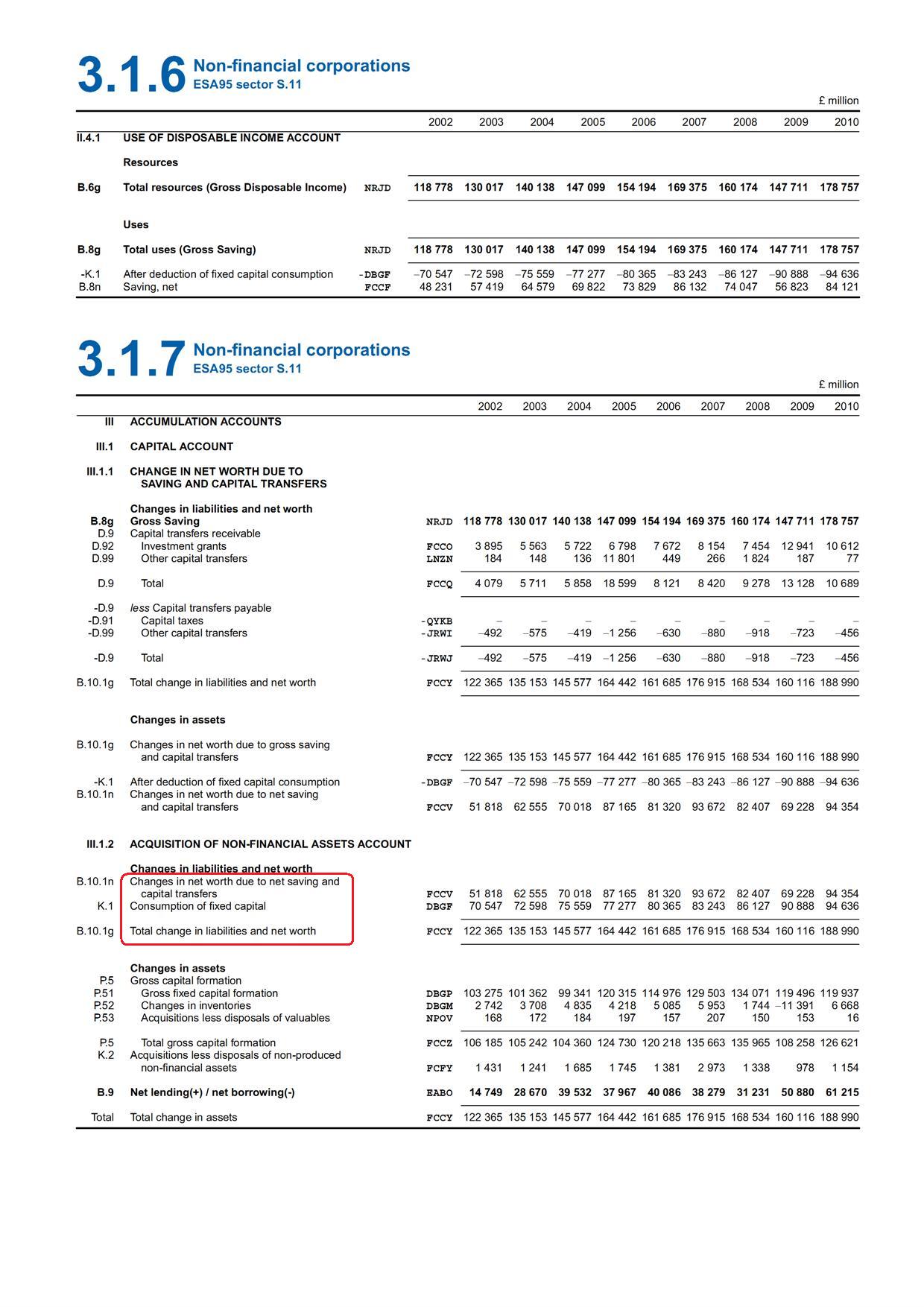In one of my recent posts, Saving Net Of Investment, I went into gross saving versus saving net of consumption of fixed capital. I showed how depreciation – or more appropriately, consumption of fixed capital – is treated in the flow of funds accounts.
Since the transactions flow matrix is a powerful tool for visualizing flow of funds, the question is where depreciation makes an appearance. The following table created by me using shows how for a simple economy.
FIGURE 1. Transactions Flow Matrix (click to enlarge)
Here “Firms” is a shorthand for all production firms as a sector and I took the consumption of fixed capital of firms only for illustration purposes. (Else I would have needed to break the households’ accounts into current and capital accounts – eating up space).
Investment here is gross investment and consumption of fixed capital makes its appearance in the line 3. It is a negative item in the current account and a positive item in the capital account. So it more of a book-keeping device but an important one because depreciation is not unimportant. The definition of profits is that of Wynne Godley and is slightly different from National Accounts. Also, while undistributed profits is a source of funds, CFC is also!
In my posts Net Worth and Net Worth: Part 2, I went into how net worth is defined. Also for a background on sources and uses of funds, see this post Sources And Uses Of Funds.
So undistributed profits (FU) and consumption of fixed capital (CFC) are both sources of funds. (Positive signs denote sources of funds and negative – uses of funds). This can be confusing because depreciation is a negative for net worth. The reason is that, as I have mentioned before, revaluations need to be done before end of period stocks are calculated. And it is where consumption of fixed capital will make a reappearance – subtracting from net worth due to a reduction in the value of nonfinancial assets.
It is important to keep in mind that equities are also sources of funds as the last line (above Σ) shows. So net saving (undistributed profits for firms) and consumption of fixed capital add to changes in net worth. (Note: Net is net of consumption of fixed capital here and not net of investment!).
This can be seen from the UK Blue Book 2011.
FIGURE 2. UK Blue Book 2011 Accumulation Accounts (click to enlarge)
A Digression
What is the origin of the confusing phrase “net saving” – saving net of investment? I believe it came from Nicholas Kaldor himself who originated the sectoral balances approach. Here’s from The Scourge Of Monetarism, 1982, pp 48-50:
The PSBR in any year can be defined as the public sector’s net de-cumulation of financial assets (net dissaving) which by accounting identity must be equal to the net acquisition of financial assets (net saving) of the private sector, home and overseas; which in turn can be broken down to the net acquisition of financial assets of the personal sector, of the company sector, and the overseas sector (the latter is the negative of the balance of payments on current account).

